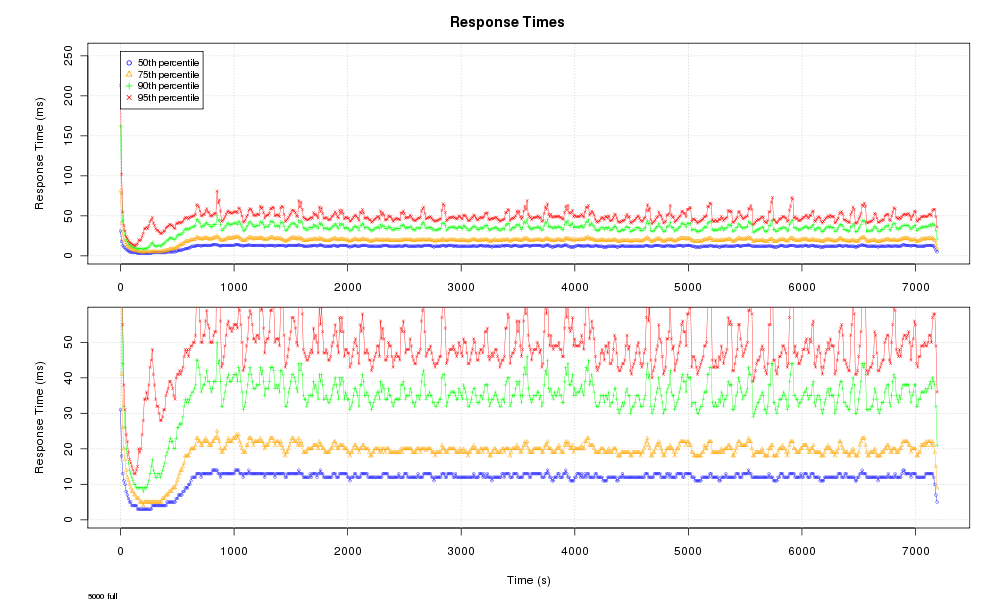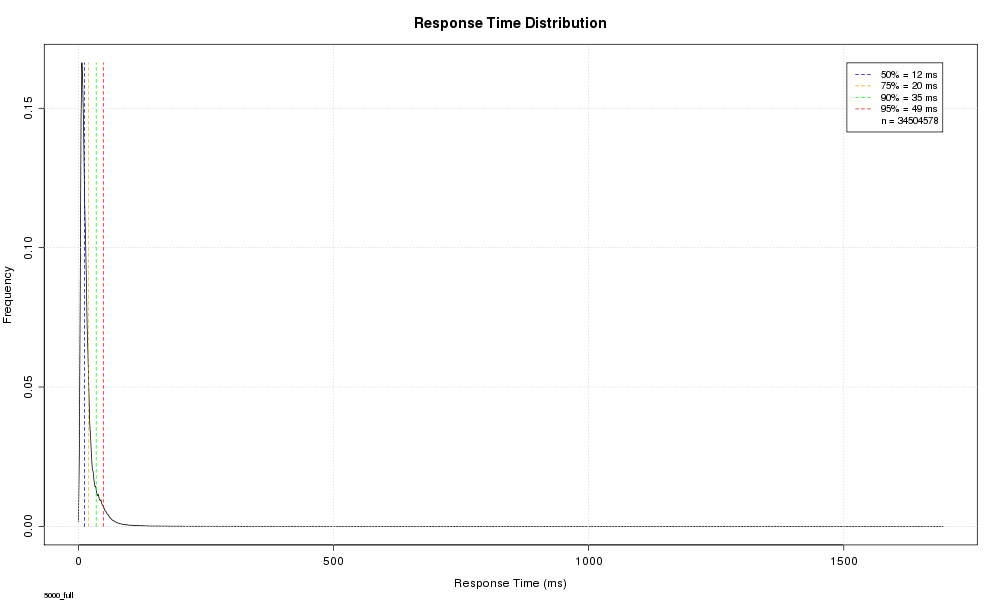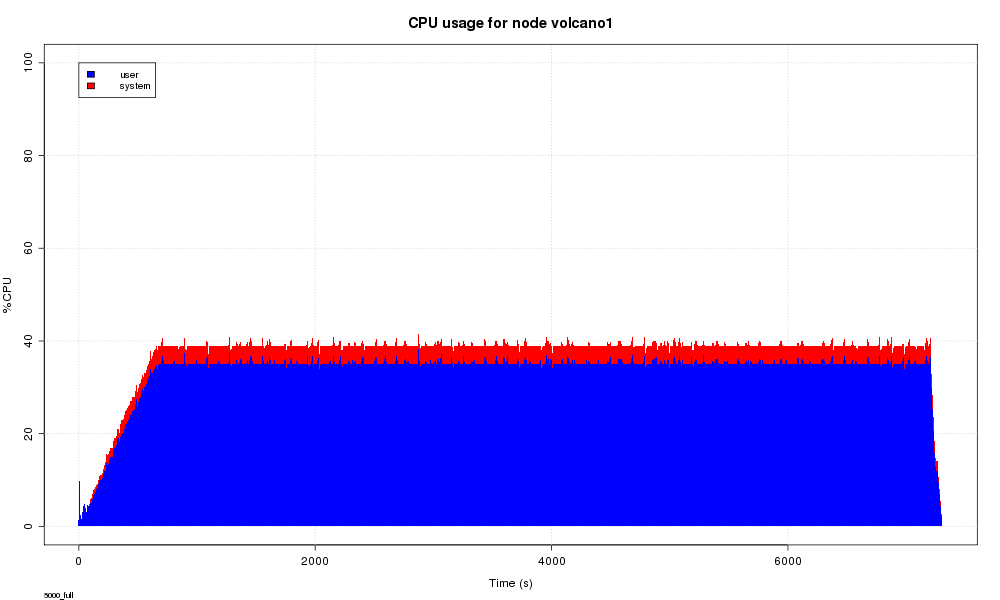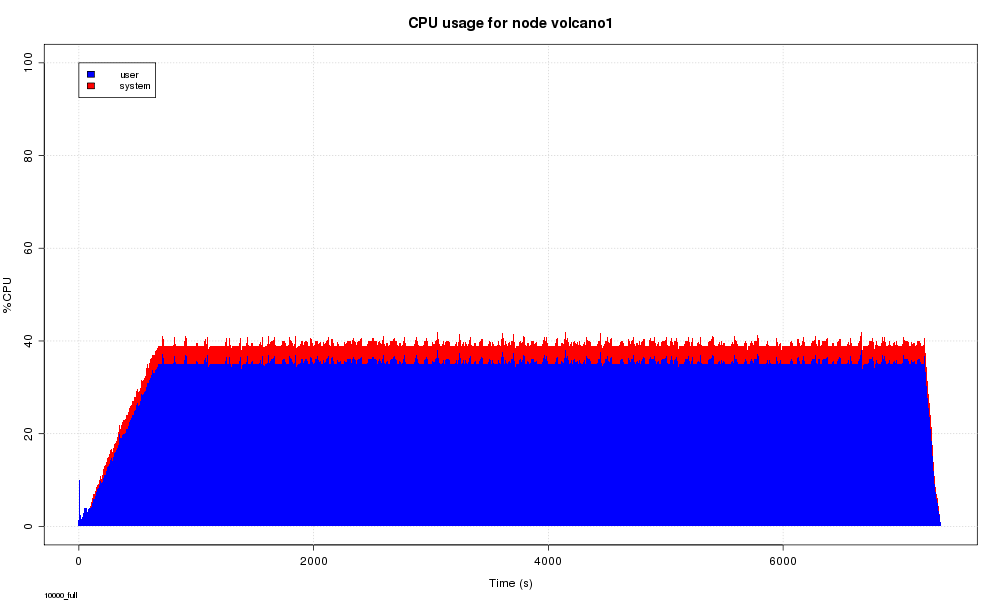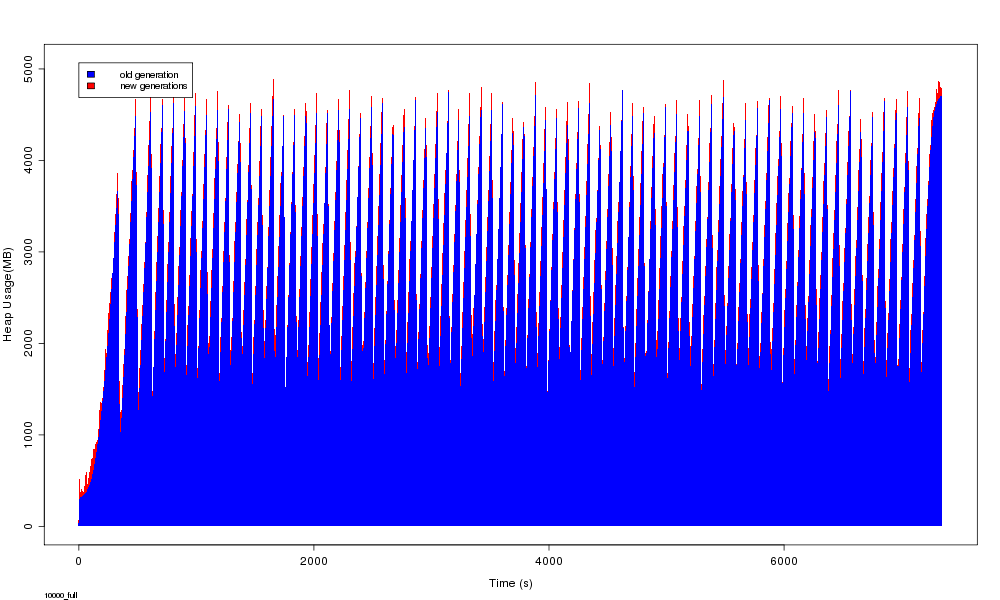Below are the results for the single node and two node benchmarks, followed by some notes on the benchmark statistics.
Two node benchmark
Notes
-
All calls are monitored for the entire duration on the originating leg.
-
The switch simulator measures call-setup time from when it sends the
InitialDPto the application until it receives the corresponding response. -
The response time (or "call-setup" time) is the time between sending the
InitialDP(1) and receiving theConnect(2), as measured by the switch. -
The response time includes the time for any MAP query to the HLR that the application may have performed.
-
To calculate the number of dialogs (for example, using 5,000 calls per second):
-
All calls involve originating and terminating treatment (in our example, this means 10,000 dialogs)
-
50% of calls involve a query to the HLR (2,500 dialogs).
... for a total of 12,500 dialogs per second.
-

